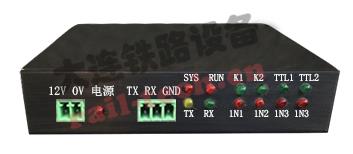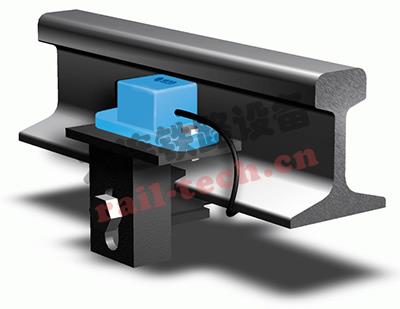Product number QH_ALXE_V1.0 Working power DC 12V ± 1V Communication Interface 232 serial communication input interface 4 optocoupler inputs Output Interface 2 relay outputs, 2 transistor outputs Operating temperature -20 °C ~60 °C Product number QH_YYCG_V10_20P Working power DC 12V ± 1V Working current consumption 22mA The output voltage 12V Output current 12mA Speed ​​range 0 .02km/h~150km/h Sensing distance 0mm~20 mm Operating temperature - 40 °C ~70 °C (50% increase in sensing distance at -40 °C, 5 % reduction at 70 °C) weight 400 g Output pulse Positive pulse (0V output when no magnetic objects are crossed and 12V pulses when magnetic objects are crossed) Protection level IP67 Measured object Magnetically conductive material Polyester Polyol For Elastomer
Polyester Polyol is a type of polyol that is derived from the reaction between a polyol (such as glycerol or ethylene glycol) and a dicarboxylic acid (such as adipic acid or phthalic anhydride). It is commonly used as a raw material in the production of polyurethane foams, coatings, adhesives, and elastomers.
Polyester polyols have several advantages over other types of polyols. They have good chemical resistance, mechanical properties, and thermal stability. They also have low toxicity and are environmentally friendly. Additionally, polyester polyols can be easily modified to achieve desired properties, such as increased flexibility or flame retardancy.
Polyester polyols are typically liquid at room temperature and have a high molecular weight. They can be further reacted with isocyanates to form polyurethane materials, which have a wide range of applications in various industries, including automotive, construction, and furniture.
PU resin, also known as polyurethane resin, is widely used in the production of synthetic leather. Synthetic leather, also referred to as faux leather or artificial leather, is a man-made fabric that imitates the appearance and feel of genuine leather. PU resin is a key component in the manufacturing process of synthetic leather, as it provides the material with its durability, flexibility, and water resistance.
The process of producing synthetic leather involves coating a fabric substrate, such as polyester or nylon, with a layer of PU resin. This resin is typically applied in liquid form and then undergoes a curing process to solidify and bond with the fabric. The resulting material has a leather-like texture and appearance.
PU resin offers several advantages for synthetic leather production. It has excellent abrasion resistance, making the synthetic leather more durable and long-lasting. It also provides flexibility, allowing the material to be easily shaped and molded into different forms. Additionally, PU resin offers good water resistance, preventing the synthetic leather from absorbing moisture and becoming damaged.
Moreover, PU resin can be customized to achieve different finishes and textures, such as smooth, grainy, or embossed patterns, depending on the desired aesthetic. It can also be colored in various shades to mimic different types of leather. This versatility makes PU resin a popular choice for synthetic leather manufacturers.
Overall, PU resin plays a crucial role in the production of synthetic leather, providing the material with its desirable qualities of durability, flexibility, and water resistance.
Polyester Polyol For Elastomer,Polyester Polyol For Tpu,Prepolymer Chemical Material,Polyurethne Raw Chemical XUCHUAN CHEMICAL(SUZHOU) CO., LTD , https://www.xuchuanpu.com
1. Axis counting machine 
2. Counter-axis sensor 
The change of active magnetic steel induced magnetic field, active magnetic steel emits a positive pulse when the magnetic conductive object is close to the active magnetic steel, and the active magnetic steel outputs a voltage of 0V when the magnetic conductive object is approaching from the active magnetic steel.
Application solution
1. Determine the number of vehicles Pass the axle sensor to transmit the wheel information to the axle counting host. The axle counting host contains the algorithm of the intelligent axle counting. The number of vehicles can be directly transmitted to the upper computer software through the serial port.
2. Determining the occupancy and availability of the track section At both ends of the track section to be occupied and occupied, two sets of equipment are provided. The system will automatically determine the direction of the incoming vehicle, and accumulate or decrement the number of axes according to the direction of arrival. Final determination of track sector occupancy and availability
Railway Information - Extended Applications of Active Magnets - Axle Counting Cases
The active magnetic steel independently researched and developed by Dalian Qihui Computer Network Co., Ltd. has the advantages of short sensing distance, no need for analog-to-digital conversion, and the ability to detect low-speed vehicles. It can be widely applied to axle counting systems in railroad traffic safety systems. It is widely used in freight yards, locomotives, etc. The axle counting system can be used to determine the number of vehicles in the railway system, determine the type of vehicles, and determine the occupancy and idleness of track sections, providing high quality railway information management. solutions, following a brief part of <br> <br> axle counting system hardware system composition